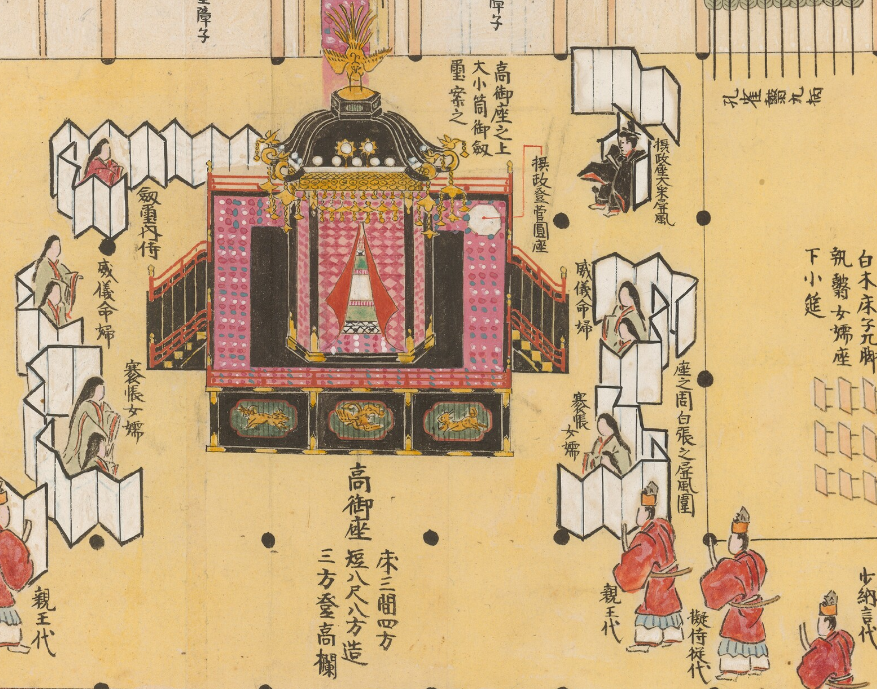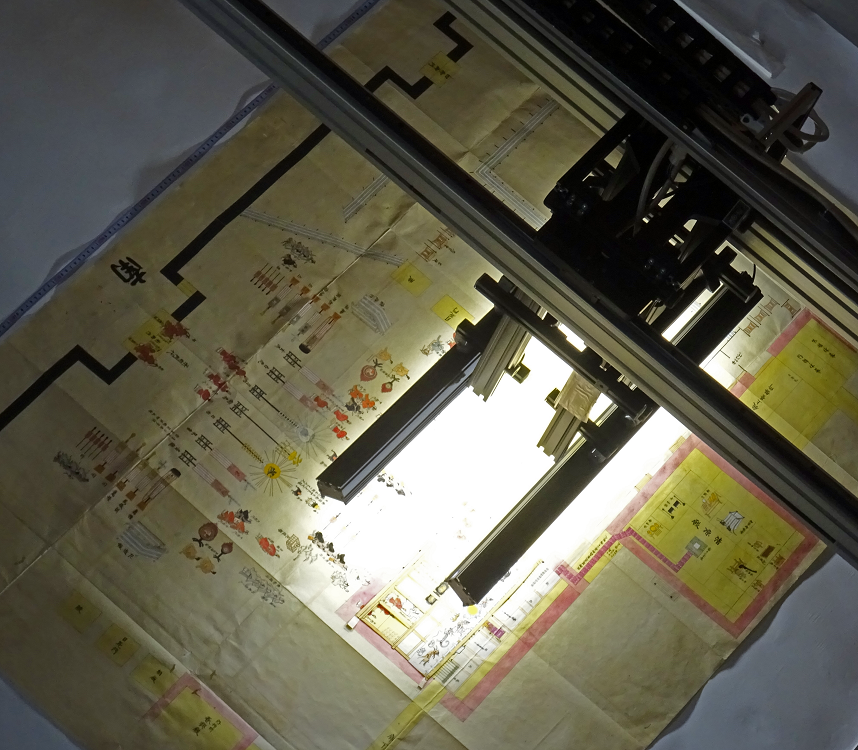2019-03-29
Illustrated plans regarding the accessions of the Emperors during the Edo Period from Nakai Collection newly digitized and released

toushou touka kazari gokisiki no zu
narabini seiryouden reifuku goran zu
Four illustrated plans regarding the accessions of the Emperors during the Edo Period from "Gishiki-nobu", Nakai Collection held by Kyoto University Main Library have been digitized and become available in Kyoto University Rare Materials Digital Archive. As of March 29, 2019, Kyoto University Rare Materials Digital Archive has 1,157,922 images of 13,522 titles.
Nakai Collection is a collection of materials passed down through the Nakai family, the Tokugawa Government's master carpenter family in Kyoto, including the plans of Kyoto Imperial Palace, Nijo Castle, Shimogamo Shrine and other shrines and temples, concerning documents and maps. These are categorized in sections such as “Kinri-no-bu” (Imperial Court), “Bakufu-no-bu” (Tokugawa Government), “Shaji-no-bu” (shrines and temples), “Chiri-no-bu” (maps) and “Gishiki-no-bu” (ceremonies).
The materials publicized this time, included in “Gishiki-no-bu”, are illustrated plans regarding the accessions of Emperor Sakurammachi (r. 1735-1747) [RB00025164, RB00025165] and Empress Gosakuramachi (r. 1762-1771) [RB00025166, B00025167] during the Edo Period. In particular, “Kyouhou nijuu kinotou no toshi juuichigatsu mikka gosokui toushou touka kazari gokisiki no zu narabini seiryouden reifuku goran zu” (享保二十乙卯歳十一月三日御即位堂上堂下飾御規式之圖并於清涼殿禮服御覧圖) demonstrates Takamikura (Imperial throne), four guardian deities of Genbu (Black Tortoise), Seiryu (Azure Dragon), Suzaku (Vermilion Bird) and Byakko (White Tiger), and attending courtiers, all of them so colorfully and finely depicted. The digitization of these has been realized thanks to the support from donors to Kyoto University Rare Materials Digital Archive Fund.
The new emperor will ascend to the throne on March 1, 2019. On this occasion, why don’t you have a moment to reflect on what our ancestors have passed down to us so lively preserved in historical documents.
Digitization Project and Kyoto University Rare Materials Digital Archive Fund

Large-sized illustrated plans are digitized by using a no-contact, ultra-high resolution scanner. The scanner runs over a plan along the frame set around it, producing strips of digital images, which are then merged into one entire image.
When investigating large-sized folded plans or maps, we need to prepare a proper area to unfold it safely and be cautious not to put too much pressure on them. On the other hand, digital images are easy to handle with a viewer that enables zooming in or out, or jumping to different sections. Kyoto University Library Network is promoting the digitization of rare materials in order to secure the long-term preservation and the wider use of them at the same time, while respecting the importance for researchers to investigate original materials.
In order to advance our digitization project, we launched “Kyoto University Rare Materials Digital Archive Fund” as a special purpose fund of Kyoto University Fund in June 2018.
We hope to contribute to the promotion of academic research and the development of education and culture by digitizing the rare materials, a common property of society, handed down to our generation and making them available to the world, while preserving the original materials for future generations.